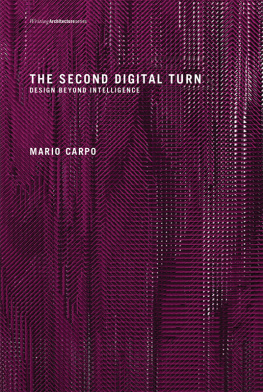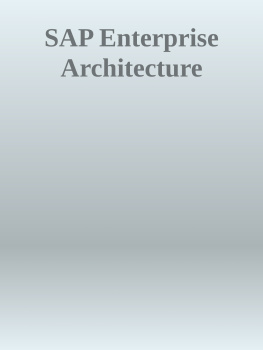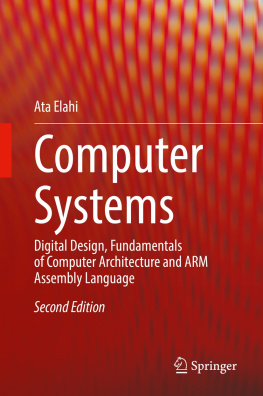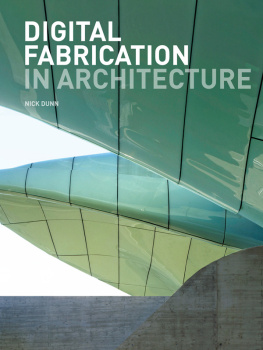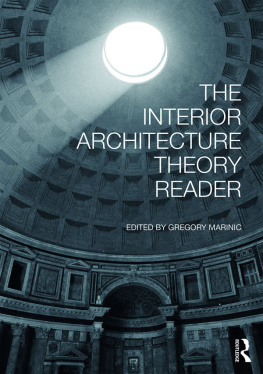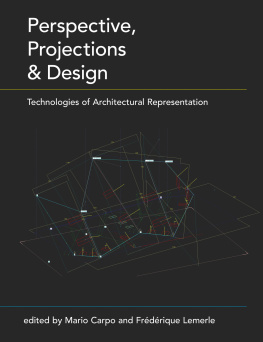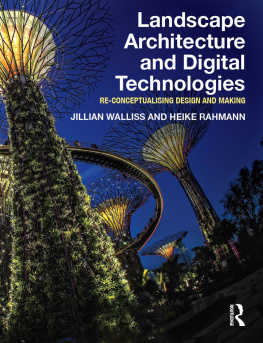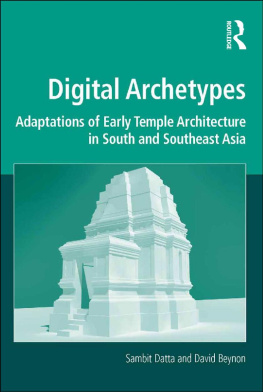Carpo - The Digital Turn in Architecture 1992-2010
Here you can read online Carpo - The Digital Turn in Architecture 1992-2010 full text of the book (entire story) in english for free. Download pdf and epub, get meaning, cover and reviews about this ebook. City: Chichester, year: 2012;2013, publisher: Wiley, genre: Romance novel. Description of the work, (preface) as well as reviews are available. Best literature library LitArk.com created for fans of good reading and offers a wide selection of genres:
Romance novel
Science fiction
Adventure
Detective
Science
History
Home and family
Prose
Art
Politics
Computer
Non-fiction
Religion
Business
Children
Humor
Choose a favorite category and find really read worthwhile books. Enjoy immersion in the world of imagination, feel the emotions of the characters or learn something new for yourself, make an fascinating discovery.

- Book:The Digital Turn in Architecture 1992-2010
- Author:
- Publisher:Wiley
- Genre:
- Year:2012;2013
- City:Chichester
- Rating:3 / 5
- Favourites:Add to favourites
- Your mark:
- 60
- 1
- 2
- 3
- 4
- 5
The Digital Turn in Architecture 1992-2010: summary, description and annotation
We offer to read an annotation, description, summary or preface (depends on what the author of the book "The Digital Turn in Architecture 1992-2010" wrote himself). If you haven't found the necessary information about the book — write in the comments, we will try to find it.
Carpo: author's other books
Who wrote The Digital Turn in Architecture 1992-2010? Find out the surname, the name of the author of the book and a list of all author's works by series.
The Digital Turn in Architecture 1992-2010 — read online for free the complete book (whole text) full work
Below is the text of the book, divided by pages. System saving the place of the last page read, allows you to conveniently read the book "The Digital Turn in Architecture 1992-2010" online for free, without having to search again every time where you left off. Put a bookmark, and you can go to the page where you finished reading at any time.
Font size:
Interval:
Bookmark:
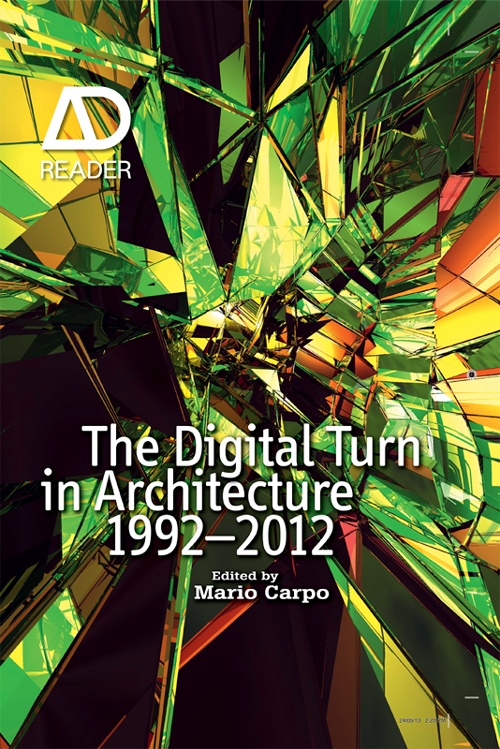
The Digital Turn in Architecture 19922012

The editor and the publisher gratefully acknowledge the people who gave their permission to reproduce material in this book. While every effort has been made to contact copyright holders for their permission to reprint material, the publishers would be grateful to hear from any copyright holder who is not acknowledged here and will undertake to rectify any errors or omissions in future editions.
2013 John Wiley & Sons Ltd
Registered office
John Wiley & Sons Ltd, The Atrium, Southern Gate, Chichester, West Sussex, PO19 8SQ, United Kingdom
For details of our global editorial offices, for customer services and for information about how to apply for permission to reuse the copyright material in this book please see our website at www.wiley.com .
This is a collective work. The copyright ownership of individual extracts is indicated in a copyright notice at the end of each extract.
All rights reserved. No part of this publication may be reproduced, stored in a retrieval system, or transmitted, in any form or by any means, electronic, mechanical, photocopying, recording or otherwise, except as permitted by the UK Copyright, Designs and Patents Act 1988, without the prior permission of the publisher.
Wiley publishes in a variety of print and electronic formats and by print-on-demand. Some material included with standard print versions of this book may not be included in e-books or in print-on-demand. If this book refers to media such as a CD or DVD that is not included in the version you purchased, you may download this material at booksupport.wiley.com . For more information about Wiley products, visit www.wiley.com .
Designations used by companies to distinguish their products are often claimed as trademarks. All brand names and product names used in this book are trade names, service marks, trademarks or registered trademarks of their respective owners. The publisher is not associated with any product or vendor mentioned in this book.
Limit of Liability/Disclaimer of Warranty: While the publisher and author have used their best efforts in preparing this book, they make no representations or warranties with the respect to the accuracy or completeness of the contents of this book and specifically disclaim any implied warranties of merchantability or fitness for a particular purpose. It is sold on the understanding that the publisher is not engaged in rendering professional services and neither the publisher nor the author shall be liable for damages arising herefrom. If professional advice or other expert assistance is required, the services of a competent professional should be sought.
ISBN 978-1-119-95175-9 (hardback)
ISBN 978-1-119-95174-2 (paperback)
ISBN 978-1-118-42591-6 (ebk)
ISBN 978-1-118-42597-8 (ebk)
ISBN 978-1-118-42606-7 (ebk)
Executive Commissioning Editor: Helen Castle
Project Editor: Miriam Swift
Assistant Editor: Calver Lezama
Design by Artmedia, London
Acknowledgements
Thanks are due to the authors who authorised the republication of their texts and images, often retrieving old originals; to Caroline Ellerby who collected, collated and researched the original illustrations; to Henry Ng who scanned and transcribed some of the texts and captions; to Megan Spriggs who edited my English; and to Helen Castle who patiently supervised the whole operation.
Research on the history of Architectural Design (AD), and on some of the AD essays republished here, was carried out by Joseph Clarke, Kyle Dugdale, Steven Lauritano, Masha Panteleyeva and Eduardo Vivanco during doctoral seminars I taught at the Yale School of Architecture in 2010 and 2011. I am grateful to them all, and special thanks are due to Kurt W Forster, Director of Doctoral Studies, and to Dean Robert AM Stern, Yale School of Architecture, for their support and advice.
Editorial Note on Presentation and Editing of Texts
With the exception of new introductions for each chapter, the texts in this anthology are verbatim reprints of published texts. Captions may not be identical to the originals, having been reformatted, and in some cases rewritten to reflect the current copyright status of the images, these include pages 21, 46, 83, 119, 121, 126 (t), 144, 167, 168, 171, 177 and 178. On page 159 the original image and caption have been replaced. Typographical and bibliographical errors have been corrected when discovered in the anthologised texts, but idiosyncrasies of spelling and punctuation remain unchanged. The bibliographic sources for all essays are in the copyright lines at the end of each chapter.
Introduction
Twenty Years of Digital Design
Building a multistorey car park these days typically involves more digital technologies than were available to Frank Gehrys office for the design of the Guggenheim Bilbao in the early 1990s. Yet few of todays car parks are hailed as examples of digitally intelligent design. In fact, in the first instance, a meaningful building of the digital age is not just any building that was designed and built using digital tools: it is one that could not have been either designed or built without them. Alert designers have ideas about what the new tools are and what they can do, and this intelligence among many other things inspires them to imagine unprecedented solutions.
Following from these premises, and looking for salient ideas, we scoured the last 20 years of Architectural Design, and chose 26 essays on digital design matters published from 1992 onwards. They are republished here unabridged and unedited (except for some typos), accompanied when possible by the original illustrations, and in chronological order, so the sequence illustrates the unfolding of digital design theory over time. For sure, not all that matters in digital design was published in AD; but a lot of it was. Since Andreas Papadakiss purchase of the magazine in the late 1970s, AD was for long the main venue for debate on architectural Post-Modernism, and at times almost the official organ of the movement. Fifteen years later, having mostly missed the Deconstructivist turn, and shortly before Papadakiss departure, AD started to embrace digital design with an enthusiasm almost equal to that of its pristine endorsement of the PoMos a commitment to the digital cause that has continued unabated to this day. The original footnotes of the articles included frequent references to other relevant titles on digital matters, and some bibliographic notes have been added in the introductions. All together, and in spite of evident limits to the range of sources and number of entries, this reader represents, we believe, a comprehensive synopsis of the recent history of digital design and its theory.
As some of the earlier essays evince (see in particular Eisenman, pages 1622 and 237, and Frazer, pages 4952), the beginnings of the digital turn in architecture were first and foremost a matter of inspiration and perhaps fascination. Electronic technologies in the early 1990s were changing some thought, revolutionising society, economy, culture and almost every aspect of daily life. So much was changing and so fast that some architects started to think that design should change too. No one quite knew how back then, and the first design experiments, in the spirit of the time, assumed that virtual reality, and cyberspace, would represent a radical alternative to the physical space of phenomena, existence and building. Some also concluded that many activities and functions would soon migrate from physical space to cyberspace, and that the design of new electronic venues in bits and bytes would soon replace the design of traditional buildings in bricks and mortar.
Font size:
Interval:
Bookmark:
Similar books «The Digital Turn in Architecture 1992-2010»
Look at similar books to The Digital Turn in Architecture 1992-2010. We have selected literature similar in name and meaning in the hope of providing readers with more options to find new, interesting, not yet read works.
Discussion, reviews of the book The Digital Turn in Architecture 1992-2010 and just readers' own opinions. Leave your comments, write what you think about the work, its meaning or the main characters. Specify what exactly you liked and what you didn't like, and why you think so.

